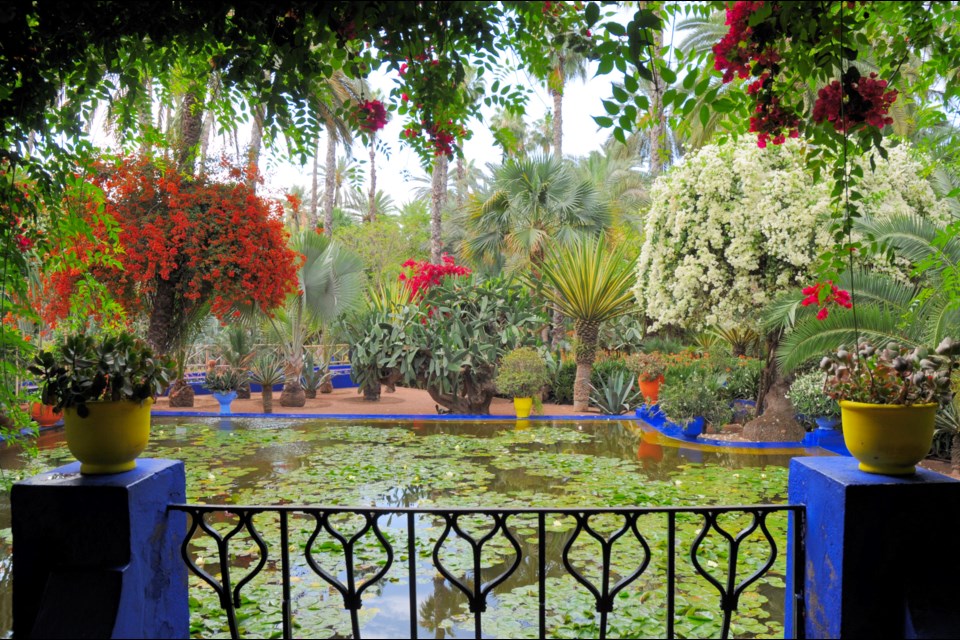MARRAKECH—Marrakech taxis are greenhouses on wheels and stepping out of one at the gate of the Jardin Majorelle into blinding sunshine brings little relief.
But beyond the gate of one of the city’s most celebrated gardens, the light becomes dappled, the air cool and moist and the temperature seems to drop ten degrees.
It’s an inner-city oasis.
The garden was founded by the French painter Jacques Majorelle (1886-1962) who acquired a parcel of land in 1924 and expanded it with further purchases until the cost of its maintenance forced him to open it to the public in 1947.
The artist planted hundreds of rare varieties of cacti, palms, willows and much more, carefully arranged along snaking paths and beside a long, straight water channel whose edges he painted a rich cobalt blue, a colour that came to be known as “bleu Majorelle.”
The channel leads the eye through dense thickets of feathery bamboo to fountains, a pond laden with lily pads, and to an even bigger surprise — an angular 1930s Cubist mansion in the same brilliant blue, startlingly out of place in a largely blank-walled ochre city. This was the artist’s studio.
Getting there involves taking a choice of winding, red-painted pathways past blue and yellow pots, rampant jasmine and great cascades of gaudy bougainvillea.
It’s like walking through a Matisse landscape.
After Majorelle’s death the garden became neglected and was doomed to redevelopment as a hotel complex, but was saved at the last minute by fashion superstar Yves Saint Laurent and his partner.
They renovated the studio, replanted the gardens and encouraged the return of gardeners.
In the artist’s studio they arranged a further surprise, creating from their own private collection now known as the Musée berbère — a small but beautifully presented exhibition of the crafts of some of Africa’s oldest tribes.
Their distinctive hanbel — woven rugs in the deep blues and burnt oranges Majorelle himself admired — are still produced in the High Atlas Mountains and widely available in Marrakech’s labyrinthine souks.
But here are also the smaller-scale, everyday objects made precious by craftsmanship: ornately carved boxes for keeping kohl, curved daggers covered in geometric designs and fabulously intricate woven baskets.
Itinerant silversmiths created jewelry abuzz with detail from multiple techniques: chiselling, filigree work, enamelling, engraving and setting with constellations of contrasting semi-precious stones.
Complex, multi-layered chest pieces and head decorations also serve to demonstrate tribal origins, are believed to have medicinal properties, and provide a means to preserve savings — flashing rather than stashing. Displays of gaudy costumes show the variety of tribes from the mountains to the Sahara.
Saint Laurent so loved this place, which he claimed to be a source of much inspiration, that after his death in 2008 his ashes were scattered here.
A final unexpected attraction is a snapped-off pillar to one side of the garden, a memorial to the late designer, whose surviving partner has donated the garden and villa to a foundation that will ensure it offers relief to sun-baked visitors for the foreseeable future.
For more information on the Jardin Majorelle and the Musée berbère, visit jardinmajorelle.com.
More stories at culturelocker.com.



